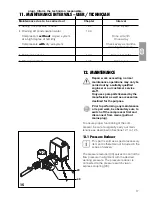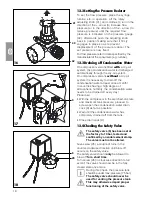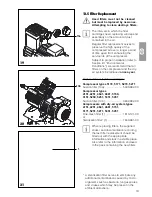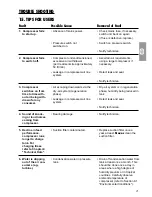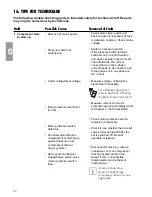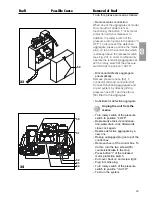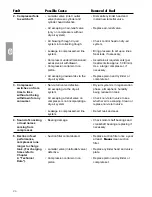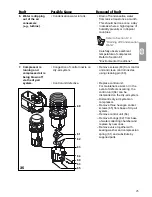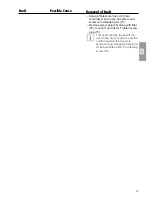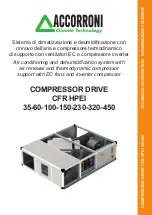
18
12.2 Setting the Pressure Reducer
To set the flow pressure, place the syringe,
turbine, etc. in operation. Lift the rotary
adjusting knob (41) and continue to turn in the
direction of the + arrow (to increase flow
pressure) or in the direction of the – arrow (to
reduce pressure) until the required flow
pressure is indicated on the pressure gauge
(42). Afterwards push the adjusting knob
back in position making sure that it firmly
engages in place so as to prevent
displacement of the pressure reducer. The
set pressure is now fixed.
For flow pressure refer to data specified by the
manufacturer of the consumers (e.g., turbine).
12.3 Draining off Condensation Water
On compressor versions fitted
with
a dry-air
system, the condensation water is discharged
automatically through the dry-air system.
On compressor versions
without
a dry-air
system it is necessary to drain off the
condensation water at least once a month!
In countries having a high degree of
atmospheric humidity, the condensation water
needs to be drained off every day!
Procedure:
• With the compressor in the switched-on state
and maximum tank pressure, proceed to
screw open the condensation-water drain
cock (9) as far as possible.
• Wait until the condensation water has
completely drained off from the tank.
• Close drain cock (9).
12.4 Checking the Safety Valve
The safety valve (6) has been set at
the factory to 10 bar, tested and
confirmed by an endorsement stamp.
The valve must not be altered.
Give screw (26) a couple of turns in the
counter-clockwise direction until blow-off
occurs on the safety valve.
The safety valve should
only
be allowed to
blow off
for a short time
.
Turn screw (26) in clockwise direction to full
extent; the valve should now be in the fully
closed state once more.
During this check, the pressure tank
should be under max. pressure (7.5 bar).
The safety valve should never be
used for venting the pressure tank.
This may otherwise impair proper
functioning of the safety valve.
16
40
41
42
9
17
18
26
6














